On our last day in Seward miserable weather persisted, check out was at 11 am and the train didn’t leave until 6 pm – not a good combo 😒
Without a car we were literally homeless for several hours and so scurried between coffee shops and anywhere else that was warm and dry that we could loiter in.
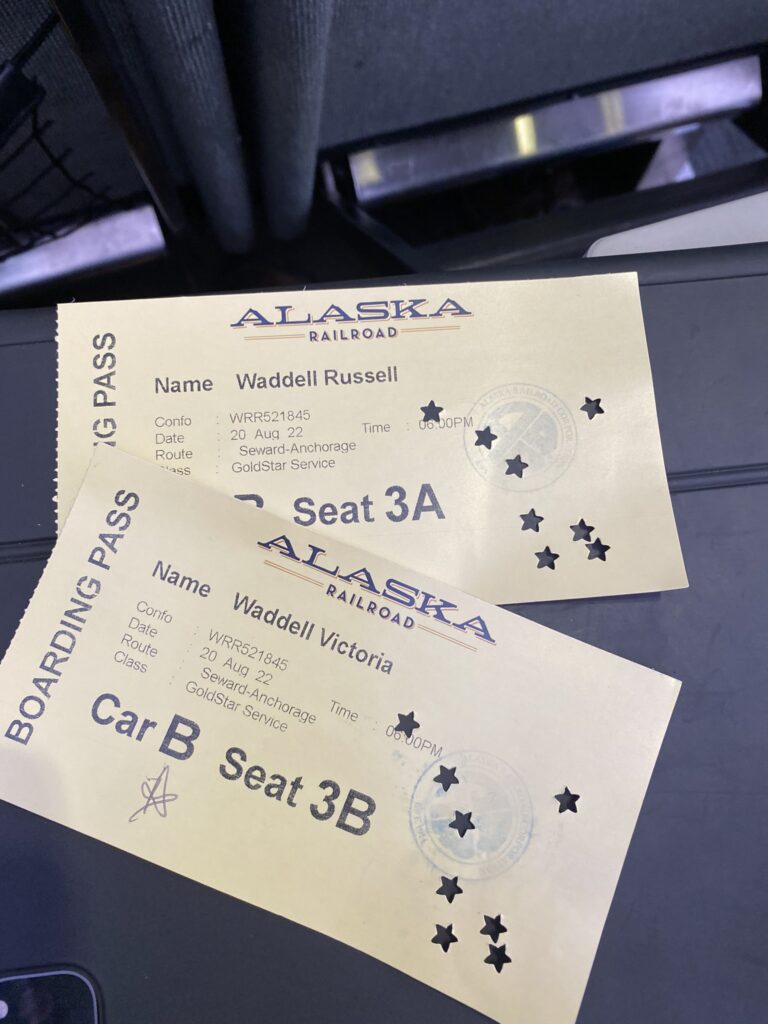
Finally, boarding started for the train and we were able to settle back in our dome car seats and look forward to the 114 mile, four hour ride to Anchorage on the Coastal Classic.
This route is considered one of the most scenic rail routes in the country and we couldn’t agree more. It traverses the stunning Kenai Mountains affording scenic views of glaciers, lush valleys and snow capped jagged peaks before descending down to the coastal stretch which runs along the Turnagain Arm, in our case just as the sun was setting.
We were served dinner in the dining car en route and also had access to an open air deck at the end of our carriage and I spent quite a bit of time out there, camera in hand.
The spectacular Turnagain Arm is characterized by remarkably large tides of up to 12 meters which are the largest tides in the United States. The flood tide often begins with a tidal bore, a wave which can have a height of 1.8 m at times, and runs in from the west at a speed of 8 – 9.7 kms an hour. When conditions are ideal surfers and paddle boarders catch the continuous wave as it roars up the narrow waterway.
The waterway was named by William Bligh who (under orders from Cook) was searching for the Northwest Passage only to find a river at the head of the waterway as they had in nearby Knik Arm and so it was named the Turnagain Arm.
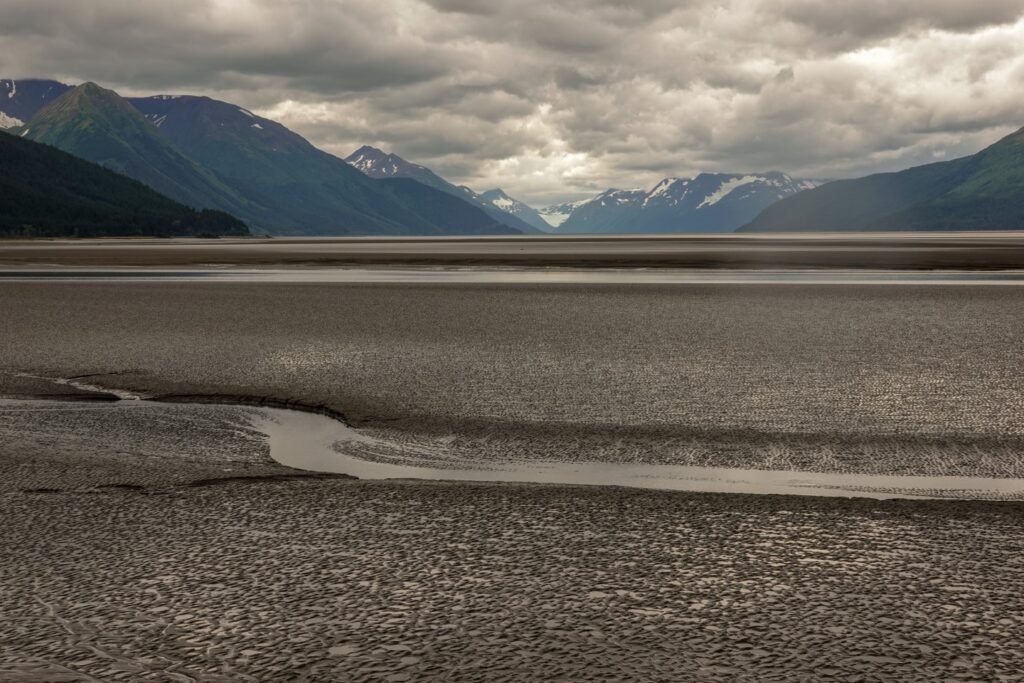
The tide was well out when we passed through, exposing miles of mud flats in direct contrast to the towering peaks on the other side. We would come back this way by car in a couple of days and hoped we might strike the tidal bore then.
The train arrived in Anchorage just after 10 pm and after an initial shortage of Ubers we were on our way to our air bnb – the Sea Wolf Inn Private Garden Apartment – where we were met by our lovely hostess and quickly settled in.
The following day we were scheduled to pick up our hire car and it was with some trepidation that we fronted up to Avis Alaska who don’t take a deposit or credit card to secure the booking…. Hire cars post Covid are quite scarce (and horrendously expensive) in Alaska and I had read more than one report about cars not existing when people turned up to collect. Not only was that not the case for us but we were allocated an almost brand new Chevvy Equinox (an upgrade) which proved to be a great car for us.
N.B. Although expensive, we don’t regret the car hire for a minute, it really allowed us to see the ‘real Alaska’ which would have been impossible using limited forms of public transport.
We had a bit of a ‘hit list’ in Anchorage given that we basically only had a day here so we headed off to the first, the Anchorage Museum.
We’re not normally big museum fans but this one came highly recommended and we had a wonderful couple of hours wandering through. There was a whole floor dedicated to cartography which was really interesting (Alaska experiences an earthquake every ten minutes!) and the section showcasing indigenous clothing and footwear gave a fascinating insight into the lifestyles and culture of this population who survive such harsh conditions.




Next we were off to Earthquake Park.
To be honest I had never heard of the infamous 1964 earthquake which devastated this region – to be fair I was only three years old – but Russell said he did remember hearing it on the news. The earthquake hit on March 27 which was Good Friday and measured a massive 9.2 on the Richter scale, the largest quake ever measured in North America and the second largest in world history!
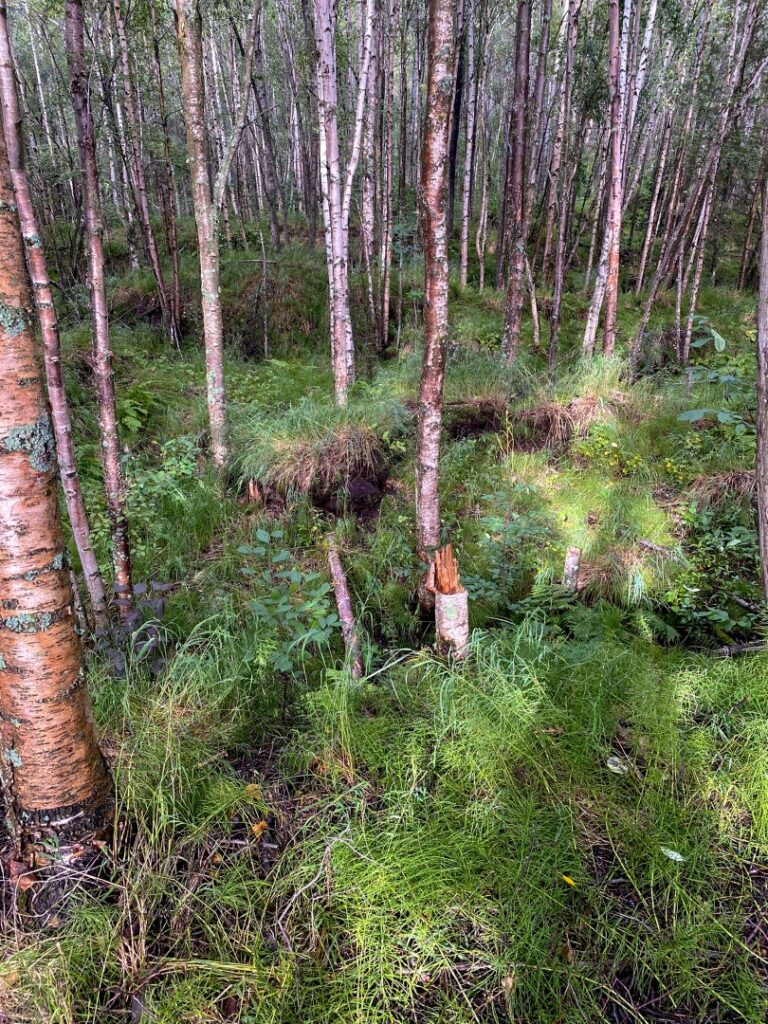
It was really difficult to take a photo which accurately depicts the topography here. The ground is literally ‘crinkled up’ over a massive area that once housed 75 prestige ‘waterside’ homes that slid into the ocean. The 134 acre park is now a memorial to this tragic event with interpretive boards and walking trails.
This was the same event that wiped out coastal towns hundreds of miles away due to the subsequent tsunami – if you are interested wiki has lots more info, I found it fascinating.
We strolled along some of the trails which were dotted with ponds and interesting fungi until we eventually came out at the beach overlooking Knik Arm. It was actually quite surreal taking a quiet moment to reflect on the history here.

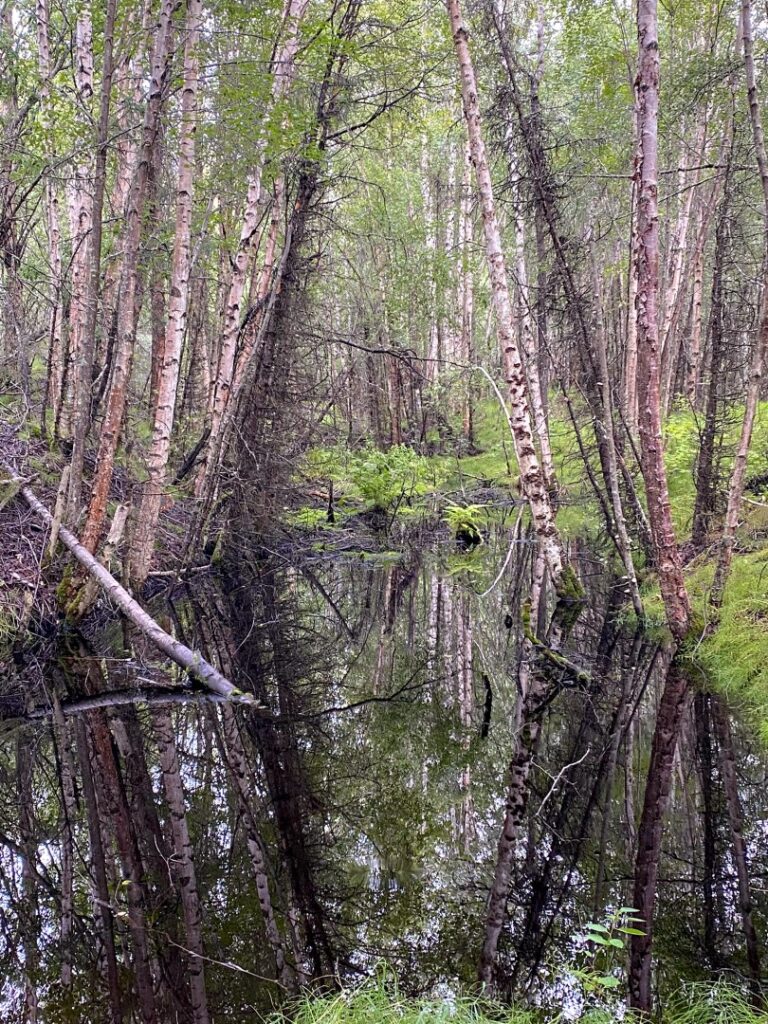


Leaving Earthquake Park we got a distant sighting of a moose (photo not worthy of this page 😉) as we drove toward nearby Lake Hood.
So, another fun fact, Alaska has the highest per capita ownership of planes in the US, 1.3% of the population own one! You can get your pilots licence at 14 and in this state where more than 90 percent of the land area is inaccessible by any other means, a plane continues to be the primary, and often only, means of transport.

It is not surprising then that Lake Hood Seaplane Base is the worlds busiest seaplane port handling on average 190 flights per day. We had to give way to planes as we drove through.
Imagine a marina dotted with yachts and then replace those with seaplanes and you can get an inkling of what Lake Hood looks like. Apparently those berths in prime position are worth lots of money and people have been known to buy them as a college ‘investment fund’ when their baby is born!


After having packed a fair bit in to our Anchorage day we found a cool dinner venue, the Spenard Roadhouse, and kicked back with a couple of cocktails and a burger.

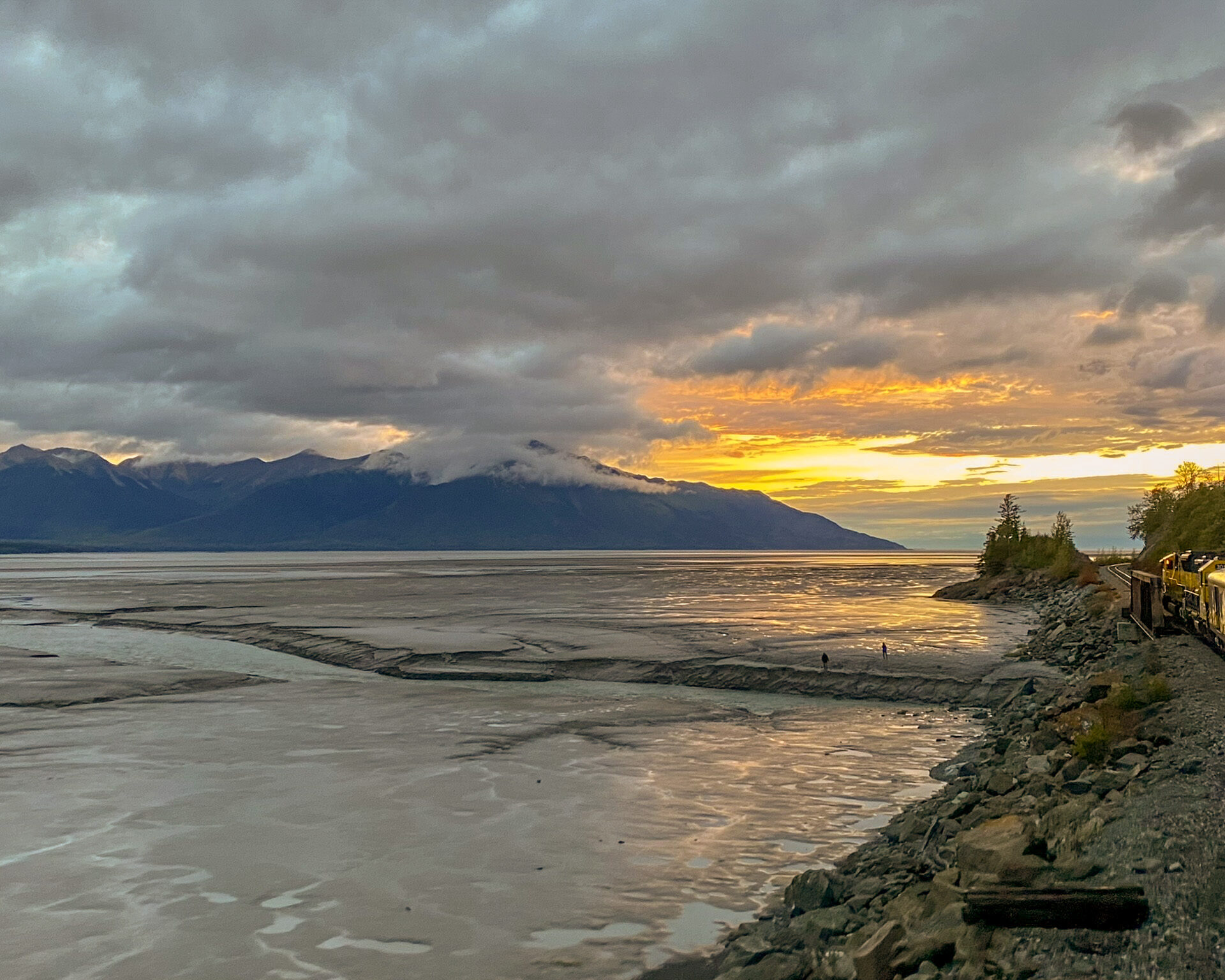

2 thoughts on “Anchorage”